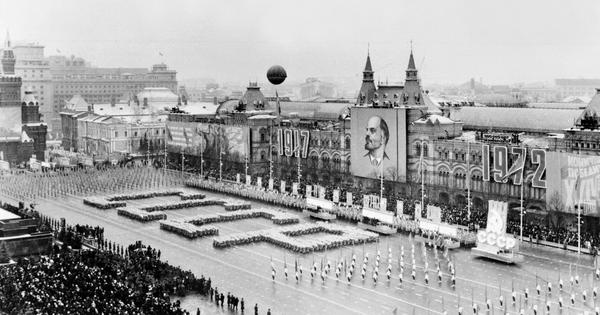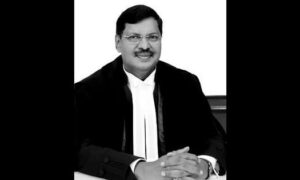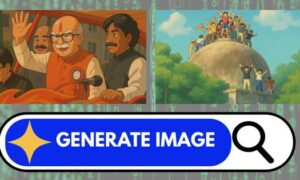
In 1972, Indo-Soviet relations were at a high point. Just a year earlier, the two countries had signed a 20-year Treaty of Peace, Friendship, and Cooperation. This agreement proved invaluable when India went to war with Pakistan in 1971, with critical Soviet support including diplomatic cover at the United Nations and the dispatch of Moscow’s Pacific Fleet to the Indian Ocean.
This strong diplomatic bond also fostered goodwill for India among the Soviet public, who had a well-known fondness for Hindi cinema. In 1972, Indian missions in the USSR issued 40% more visas, although strict Soviet rules on foreign travel meant that the majority of the 3,000-plus visitors to India were part of government-related programmes.
Despite this warmth in relations, Communist USSR was not considered a potential immigration destination for very many Indians. At the time, Moscow was home to only about 150 Indian families. The student community was relatively larger, numbering a few thousand and spread across cities like Leningrad (now St Petersburg), Kyiv, Volgograd, Odessa and Tashkent. Most of them were enrolled in long-term engineering or science and technology programmes.
In an era when phone calls required an operator and postal services could take months, these Indians were intensely disconnected from life back home. This isolation often forced the newcomers to become fluent in Russian and integrate into a society where they were viewed as exotic.
Brotherhood of nations
Diplomats in Moscow and Odessa, where India had a consulate, were acutely aware of the isolation felt by Indian students and their growing distance from the homeland. First Secretary JN Saksena wrote in his 1972 annual report to the Indian External Affairs Ministry about their assimilation into local culture:
“According to the nature of their studies, they are required to stay here continuously for a period of four to six years or even more… It is but natural that some of the students develop closer friendships with their companions, especially of the opposite sex, and ultimately decide to strengthen it further by entering into the bond of marriage.”
Students frequently applied to the Indian government for permission to marry Soviet citizens – a mandate by the USSR to ensure the foreign students were not already married back home. Such marriages were generally accepted by Soviet society, which promoted the concept of “brotherhood of nations” and “friendship of peoples”.
It wasn’t just students who found love in the USSR during the 1970s. Indian nationals working for entities like the Indian language services at Moscow Radio and Progress Publishers, as well as some diplomats, also married local women. In the case of diplomats, spouses were required to accept Indian citizenship.
Domestic workers
The diplomatic staff at the Indian embassy would often complain about their domestic help, who they were permitted to bring from India. Saksena wrote in his annual report that repatriation of domestic workers was a challenge for the embassy.
“Their term of contract is usually for a minimum period of three years,” he noted in the annual report. “However, owing to the tremendous hardship involved on account of climatic conditions, non-availability of daily requirements and such other matters, sometimes the servants get fed up and develop a headstrong attitude towards their masters. In this mood, there is a danger that they might present some security problems.”
The embassy unsurprisingly blamed the domestic staff whenever there was a dispute. In 1972, three servants were repatriated for their “misconduct”.
Many Indians living in Moscow were homesick, and to help alleviate this, the embassy established two clubs to organise cultural programmes. “The Embassy club and the Ladies’ club do their best to bring all the Indians together for social intercourse,” Saksena wrote.
In 1972, the clubs held “melas” for Diwali and Holi, as well as celebrations for New Year’s Eve, Women’s Day and Children’s Day. Meanwhile, the 503rd birth anniversary of Guru Nanak was commemorated by the embassy with lectures from Soviet Indologists, a langar (community meal) and sermons from local Sikhs. Saksena remarked that these events were organised “in perfect Indian style” and so well that even visitors felt as though they were in one of India’s famous gurdwaras.
“Such functions always prove to be a source of profound joy and happiness, especially to a very large number of Indian students in Moscow since it is so rare to them,” the first secretary said, noting that some Russians also took part. “This naturally helped to strengthen the already good relations existing between the two countries.”
The embassy also marked the first anniversary of the Indo-Soviet Treaty of Friendship, Peace and Cooperation, signed on August 9, 1971, with a series of cultural events. Indian artists performed across the USSR, and a film delegation – including Hrishikesh Mukherjee, Nargis and Sunil Dutt, and Simi Grewal – visited from India. The embassy’s cultural hall, which screened Hindi films without Russian dubbing, became a vital space for the Indian community. Given the limited seating, screenings were repeated to accommodate as many people as possible.
Despite these cultural events, many in the Indian community found the USSR challenging.
“Life in the USSR is very hard,” Saksena wrote. “Spices, pulses, masalas and pickles, which form an integral part of any Indian diet, are locally not available. Indians stationed in Moscow have time and again appealed to the embassy for making some arrangement such as opening of a cooperative store of such goods, but so far no tangible result is produced.”
Another common complaint was the slow and unreliable postal service. Saksena noted that the embassy had a mailbag system for official correspondence, which was available for use by some students but not by the non-diplomatic Indians working for institutions like Radio Moscow or Progress Publishers. This group, numbering about 50, felt unduly discriminated against, especially “whenever their post via normal postal channels is unduly delayed or lost”.
Visa-less arrival
A particularly vexing issue for the embassy was the regular arrival of Indian citizens in Moscow without a visa. “This involves tremendous hardship not only to the visitor but also to the embassy staff since it is very difficult to obtain a visa on arrival here,” Saksena wrote. “The procedure is that the visitor’s passport and photographs are to be presented to the Soviet Foreign Office, along with the embassy’s note of request.”
Once the visa was granted, it had to be sent back to the passenger at the airport, before they could clear immigration and customs. “The airport is 45 kms from the town,” Saksena noted. “Timings of planes are odd and it becomes absolutely impossible to get the visa immediately. The result is that the person has to stay at the airport overnight and the embassy staff has to suffer a lot in visiting the airport twice, apart from the fact that it causes so much embarrassment to the embassy and the Soviet officers concerned.”
Despite these challenges, the embassy managed to prevent any deportations that year. The Indian consulate in Odessa also regularly helped stranded seamen return home, ensuring they received financial compensation from the Shipping Corporation of India.
Most Indians living in the USSR understood that their stay would be temporary, and while some, particularly those married to Russians, remained after the collapse of the Soviet Union, the majority returned home. Many of those who came back spoke nostalgically of the Russian winters, the local culture and the people. Clearly, not everything about their time in the Soviet Union was harsh.
Ajay Kamalakaran is a writer, primarily based in Mumbai. His Twitter handle is @ajaykamalakaran.
📰 Crime Today News is proudly sponsored by DRYFRUIT & CO – A Brand by eFabby Global LLC
Design & Developed by Yes Mom Hosting






